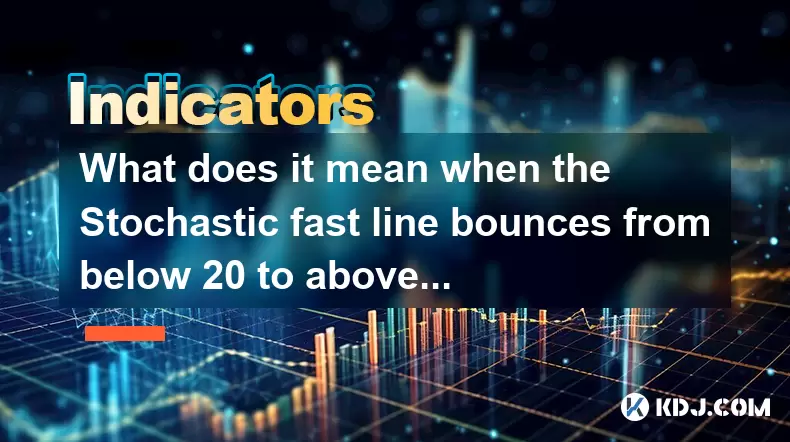-
 Bitcoin
Bitcoin $118600
0.36% -
 Ethereum
Ethereum $3855
1.06% -
 XRP
XRP $3.195
-0.09% -
 Tether USDt
Tether USDt $1.000
-0.04% -
 BNB
BNB $844.5
6.23% -
 Solana
Solana $191.3
2.83% -
 USDC
USDC $0.9997
-0.01% -
 Dogecoin
Dogecoin $0.2376
0.10% -
 TRON
TRON $0.3242
0.83% -
 Cardano
Cardano $0.8222
0.13% -
 Hyperliquid
Hyperliquid $45.26
6.53% -
 Sui
Sui $4.200
-2.56% -
 Stellar
Stellar $0.4336
-1.24% -
 Chainlink
Chainlink $18.86
0.28% -
 Hedera
Hedera $0.2796
-1.75% -
 Bitcoin Cash
Bitcoin Cash $583.3
-1.84% -
 Avalanche
Avalanche $27.06
8.09% -
 Litecoin
Litecoin $112.3
-1.16% -
 Toncoin
Toncoin $3.353
0.58% -
 UNUS SED LEO
UNUS SED LEO $8.968
-0.11% -
 Shiba Inu
Shiba Inu $0.00001395
-0.54% -
 Ethena USDe
Ethena USDe $1.001
-0.03% -
 Uniswap
Uniswap $10.76
0.69% -
 Polkadot
Polkadot $4.175
0.26% -
 Monero
Monero $326.7
1.07% -
 Bitget Token
Bitget Token $4.665
1.61% -
 Dai
Dai $0.9998
-0.02% -
 Pepe
Pepe $0.00001271
0.32% -
 Cronos
Cronos $0.1416
2.01% -
 Aave
Aave $299.3
1.15%
What does it mean when the Stochastic fast line bounces from below 20 to above 80?
A Stochastic fast line rising from below 20 to above 80 signals a strong shift from oversold to overbought, indicating potential bullish momentum in crypto markets.
Jul 28, 2025 at 11:42 pm

Understanding the Stochastic Oscillator
The Stochastic Oscillator is a momentum indicator widely used in cryptocurrency trading to assess the strength and direction of price movements. It compares a cryptocurrency’s closing price to its price range over a specific period, typically 14 candles. The oscillator consists of two lines: the %K line, known as the fast line, and the %D line, a signal line derived from the %K line. These values fluctuate between 0 and 100, with levels below 20 considered oversold and above 80 considered overbought. When traders observe the fast line moving from below 20 to above 80, it signals a rapid shift in momentum that demands attention.
What Happens When the Fast Line Rises from Below 20?
A Stochastic fast line emerging from below the 20 threshold indicates that the asset was in an oversold condition, suggesting strong downward pressure. This state often reflects excessive selling, possibly driven by panic or capitulation among traders. When the line begins to rise, it shows that buying pressure is increasing. The shift from below 20 implies that the closing prices are beginning to approach the upper end of the recent price range. This movement is an early sign that bearish momentum is weakening and bullish momentum may be taking over. In the volatile cryptocurrency market, such transitions can occur rapidly, especially during news-driven events or macroeconomic shifts.
Significance of Crossing Above the 80 Level
When the fast line moves from below 20 and crosses above 80, it enters the overbought zone. This transition suggests that buying pressure has become dominant and the asset may be experiencing a strong upward momentum. In crypto markets, where sentiment can shift quickly, such a move often coincides with a breakout from a consolidation phase or a reaction to positive news. The crossing above 80 is not just a numerical change; it reflects a psychological shift among traders. The rapid ascent implies that recent closes are near the high of the price range, indicating strong demand. However, entering overbought territory does not automatically mean a reversal is imminent—it may signal continuation of a bullish trend.
Interpreting the Full Bounce: From Oversold to Overbought
A full bounce of the fast line from below 20 to above 80 represents a dramatic shift in market dynamics. This kind of movement is rare in stable assets but more common in high-volatility cryptocurrencies like Bitcoin, Ethereum, or meme coins. The complete swing suggests that the market has transitioned from extreme fear to extreme greed in a short timeframe. Traders interpret this as a powerful bullish signal, especially if confirmed by rising volume and price breaking key resistance levels. The speed of the move matters—faster bounces often correlate with stronger trends. However, false signals can occur during sideways markets or low-liquidity periods, so context is essential.
How to Use This Signal in Crypto Trading
To effectively act on a Stochastic fast line bounce from below 20 to above 80, traders should follow a structured approach. The signal should not be used in isolation but combined with other technical tools for confirmation.
- Verify that the price chart shows a clear upward trend or breakout pattern, such as a bull flag or ascending triangle.
- Check trading volume to ensure the move is supported by strong participation—low volume may indicate a false breakout.
- Look for alignment with other indicators, such as the Relative Strength Index (RSI) moving above 50 or a bullish crossover in the MACD.
- Monitor key support and resistance levels—a bounce from a major support zone adds credibility to the signal.
- Consider the timeframe—a bounce on the 4-hour or daily chart carries more weight than on the 5-minute chart.
Setting entry points near the time the fast line crosses above 20 can capture early momentum, while placing stop-loss orders below recent swing lows helps manage risk. Take-profit levels can be set near previous resistance zones or using a risk-reward ratio of at least 1:2.
Common Misinterpretations and Risks
While a fast line bounce from 20 to 80 appears strongly bullish, it can lead to misinterpretations. One common mistake is assuming the trend will continue indefinitely once overbought levels are reached. In reality, overbought does not mean over, and prices can remain elevated during strong uptrends. Another risk is ignoring divergence—sometimes the price makes a new high while the Stochastic fails to surpass its prior peak, signaling weakening momentum. Additionally, in choppy or ranging markets, the oscillator may give multiple false signals. Cryptocurrency markets are also prone to whipsaws, where the fast line spikes above 80 only to reverse sharply due to profit-taking or news events.
Frequently Asked Questions
Can the Stochastic fast line move from below 20 to above 80 in one candle?
Yes, especially in highly volatile cryptocurrencies. A sudden surge in buying pressure, such as from a positive announcement or large whale transaction, can cause the %K line to spike rapidly. This scenario is more likely on shorter timeframes like 5-minute or 15-minute charts.
Does this signal work the same across all cryptocurrencies?
The behavior varies. Major coins like Bitcoin and Ethereum tend to produce more reliable signals due to higher liquidity and market efficiency. Low-cap altcoins may generate false signals frequently because of low volume and susceptibility to manipulation.
Should I sell when the fast line reaches above 80?
Not necessarily. Reaching above 80 indicates overbought conditions, but in a strong uptrend, the price can continue rising. Selling solely based on overbought readings can lead to missed gains. It’s better to wait for bearish confirmation, such as a reversal pattern or divergence.
How can I adjust the Stochastic settings for better accuracy?
The default 14-period setting works well, but traders may use a 10-period for more sensitivity or a 21-period for smoother signals. Combining the fast line with a 3-period %D (signal line) helps filter noise. Always backtest adjustments on historical data before live trading.
Disclaimer:info@kdj.com
The information provided is not trading advice. kdj.com does not assume any responsibility for any investments made based on the information provided in this article. Cryptocurrencies are highly volatile and it is highly recommended that you invest with caution after thorough research!
If you believe that the content used on this website infringes your copyright, please contact us immediately (info@kdj.com) and we will delete it promptly.
- Avalanche (AVAX) Price Pump Incoming? Analysts Weigh In
- 2025-07-29 06:50:12
- Presales, Investment, July 2025: What's Hot and What's Not
- 2025-07-29 06:30:12
- PayPal, Bitcoin, and Merchants: A New Era of Commerce?
- 2025-07-29 07:10:13
- RUVI Token's Ripple Rally Potential: Audited AI Crypto Heats Up!
- 2025-07-29 04:50:12
- ADA Price, Cardano, SUI & Remittix: Decoding the Latest Crypto Moves
- 2025-07-29 04:50:12
- Solana, ARK Invest, and Staking: A New Era of Institutional Crypto?
- 2025-07-29 05:30:12
Related knowledge

What does it mean when the EMA combination crosses upward for the first time after sideways trading?
Jul 28,2025 at 03:43pm
Understanding the EMA and Its Role in Technical AnalysisThe Exponential Moving Average (EMA) is a widely used technical indicator in cryptocurrency tr...

What signal does the ROC send when it rises rapidly from a low level and breaks through the zero axis?
Jul 27,2025 at 10:15am
Understanding the Rate of Change (ROC) IndicatorThe Rate of Change (ROC) is a momentum-based oscillator used in technical analysis to measure the perc...

What does it mean when the price breaks through the double bottom neckline and the moving averages are arranged in a bullish pattern?
Jul 28,2025 at 10:57am
Understanding the Double Bottom PatternThe double bottom is a widely recognized reversal chart pattern in technical analysis, particularly within the ...

What signal does the DMA fast line cross the slow line above the zero axis?
Jul 28,2025 at 05:42am
Understanding the DMA Indicator and Its ComponentsThe DMA (Difference of Moving Averages) indicator is a technical analysis tool used in cryptocurrenc...

What does it mean that the rebound is blocked after the moving average is arranged in a short position for the first time?
Jul 26,2025 at 10:51am
Understanding the Short-Term Moving Average ConfigurationWhen traders refer to a 'short position arrangement' in moving averages, they are describing ...

What does it mean that the ZIGZAG low point is raised and the high point breaks through the previous peak?
Jul 28,2025 at 03:28am
Understanding the ZIGZAG Indicator in Cryptocurrency TradingThe ZIGZAG indicator is a technical analysis tool widely used in cryptocurrency trading to...

What does it mean when the EMA combination crosses upward for the first time after sideways trading?
Jul 28,2025 at 03:43pm
Understanding the EMA and Its Role in Technical AnalysisThe Exponential Moving Average (EMA) is a widely used technical indicator in cryptocurrency tr...

What signal does the ROC send when it rises rapidly from a low level and breaks through the zero axis?
Jul 27,2025 at 10:15am
Understanding the Rate of Change (ROC) IndicatorThe Rate of Change (ROC) is a momentum-based oscillator used in technical analysis to measure the perc...

What does it mean when the price breaks through the double bottom neckline and the moving averages are arranged in a bullish pattern?
Jul 28,2025 at 10:57am
Understanding the Double Bottom PatternThe double bottom is a widely recognized reversal chart pattern in technical analysis, particularly within the ...

What signal does the DMA fast line cross the slow line above the zero axis?
Jul 28,2025 at 05:42am
Understanding the DMA Indicator and Its ComponentsThe DMA (Difference of Moving Averages) indicator is a technical analysis tool used in cryptocurrenc...

What does it mean that the rebound is blocked after the moving average is arranged in a short position for the first time?
Jul 26,2025 at 10:51am
Understanding the Short-Term Moving Average ConfigurationWhen traders refer to a 'short position arrangement' in moving averages, they are describing ...

What does it mean that the ZIGZAG low point is raised and the high point breaks through the previous peak?
Jul 28,2025 at 03:28am
Understanding the ZIGZAG Indicator in Cryptocurrency TradingThe ZIGZAG indicator is a technical analysis tool widely used in cryptocurrency trading to...
See all articles

























































































